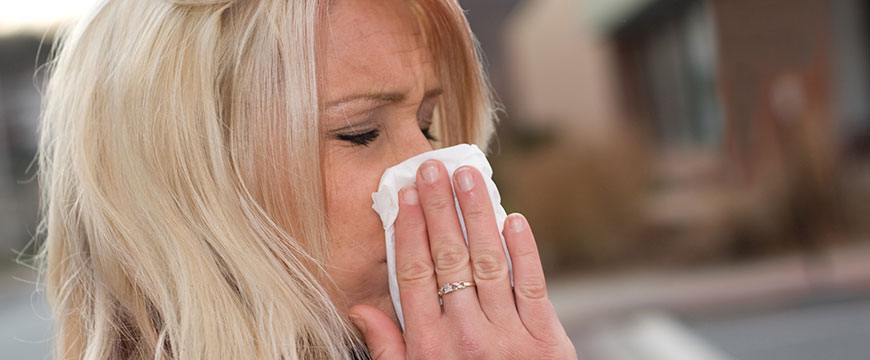
While the increasing temperatures allow you to spend time outdoors, the downside is that the plants begin to produce pollen, which can trigger your allergies.
If you suffer from seasonal allergies, you might be wondering how you will survive the spring season, right? Well, there are plenty of ways to go about it. These ways include:
Don’t wait until too late to medicate
Allergies can be efficiently treated with a variety of drugs, including nasal sprays and antihistamines, but you must plan ahead of time.
The medications take some time to work, so start two to four weeks before allergy season.
Allergy season varies based on where you live and what your allergies are. Spring allergies caused by tree pollen typically start in February and linger until early summer.
To protect yourself, you should visit your allergy doctor during winter and have them prescribe medications that will give you the protection that you need during the allergy season.
Don’t bring the enemy home.
The last thing you want is to bring allergens that are causing allergies into your home. To ensure this doesn’t happen, when you arrive home, always change your clothes and remove your shoes.
Pollen and mildew in the air adhere to your clothing, and when you sit on your furniture, you spread them all over the place.
It can be even better if you can remove the clothes outside and leave them there. This way, you ensure that your house is sterile and free of harmful pollen.
Wear a mask outside
Wearing a mask outside is a must for persons with severe allergies because it filters out harmful allergens.
The cool thing is that there are many types of masks that you can go for. The most common ones are surgical, KN95, and N95 masks, which are all effective.
Besides the masks, it’s also a good idea to use eye protection like sunglasses or goggles.
The key to getting the best result with these units is to ensure that they are the right size. For example, the masks should be a right fit that ensures that you are comfortable, and they don’t let in any pollen.
Keep your sinuses clean.
You need to keep your sinuses clear of the pollen. One of the ways to do this is by cleaning them.
Once a day, before going to bed, flush your sinuses with saline rinse bottles.
Get rid of irritants in your nose so you don’t have inflammation when you go to sleep.
You can purchase the rinse bottles at any drugstore or retailer. You can also ask your allergist if they have the bottles.
You should note that when using the bottles, it might get uncomfortable at the start, but when you get used to them, it becomes easy.
To clean your sinuses, stand with your head over a sink or in the shower, tilted to one side.
Use a squeeze bottle to slowly pour or squeeze the saline solution into the upper nostril. Allow the solution to exit your other nostril and enter the drain. At this time, breathe through your lips rather than your nose.
Repeat on the other side.
Try not to allow the water to go down the back of your throat. You may need to reposition your head until you get the proper angle.
When you’re finished, gently blow your nose into a tissue to remove any remaining mucus.
Don’t rush to use Benadryl
Many people rely on Benadryl, also known as diphenhydramine. While this is the case, don’t rush to get the medication.
The reason for this is that it can readily get into your brain and cause significant sedation that can easily last into the next day and disrupt your sleep cycle, worsening your sleep quality.
Other unpleasant side effects of the condition include dry lips, blurred eyesight, urine retention, and constipation.
Stick with newer medicines like Claritin, Allegra, and Xyzal.
These new medications have been modified to be less likely to get into your brain and cause sedation. They are much safer to use.
Don’t rely on honey
There is a lot of misinformation on the internet regarding what to do for a cough and cold. The classic one is whether local honey is ideal for treating allergies.
It’s a myth. This means that if you consume local honey, you get a little pollen, and it can’t help your allergies.
The concept of using honey to cure allergies is comparable to receiving allergy injections. You should note that honey has not been demonstrated to be beneficial, but allergy injections have.
When a person consumes local honey, they are said to be ingesting local pollen. A person’s sensitivity to this pollen may decrease over time. As a result, individuals may have fewer seasonal allergy symptoms.
It is true that bees pollinate flowers and produce honey. However, the quantity of pollen from the environment and plants are assumed to be relatively modest and diverse.
When you consume local honey, there is no certainty of how much (if any) pollen you will be exposed to. This is distinct from allergy shots, which purposely desensitize a person to pollen at regular doses.
You should note that honey has not been clinically proved to reduce allergies. However, it can still be a delicious substitute for sugary dishes.
Some people take it as a cough suppressant, though, and it has been shown to alleviate the condition.
If you suffer from seasonal allergies, you should seek medical care. Over-the-counter allergy medications are one example, as is avoiding being outside as much as possible.
Parting shot
It’s not rocket science to survive the spring allergies. You should always start treating the condition as early as possible.
This calls for you to see an allergy specialist doctor a couple of weeks before the allergy season kicks in.
You should work hard at minimizing the amount of allergens you bring back into the house, but it would even be better if you can avoid going outside altogether, especially when the pollen count is high.








